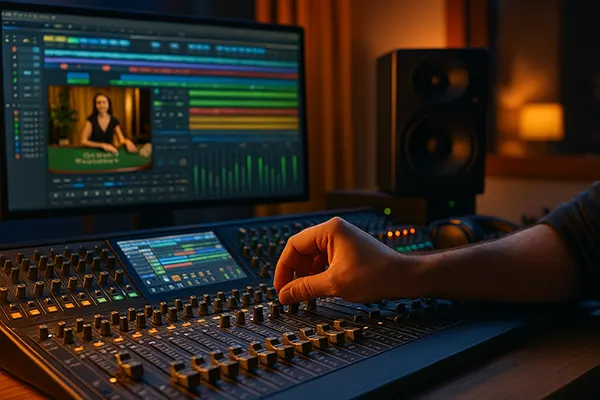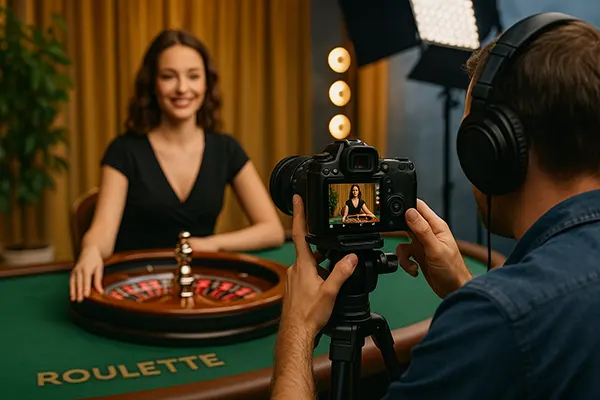How Music Design Works in Live Casinos: Interview with Sound Designers

Music plays a pivotal role in shaping the atmosphere of live casinos. It goes far beyond background noise—sound design is a strategic tool used to immerse players, influence their emotions, and maintain engagement. But how is the music created, selected, and implemented in such a dynamic environment? We sat down with several sound designers who shared exclusive insights into their creative processes and the impact of audio in live casino experiences.
The Role of Music in Live Casino Environments
Sound in live casinos isn’t simply decorative—it is a core part of the gaming architecture. From tension-building crescendos in roulette to calming loops in blackjack, the soundscape is tailored to each game type. These musical decisions are deliberate and aimed at shaping the pace and emotional engagement of players. According to industry sound designer Max Reynolds, “Each note has a purpose. It guides the player’s journey without being intrusive.”
Live casino studios often mimic real casino environments, and music is a fundamental part of creating this illusion. The right music can make players feel like they’re seated at an elite gambling table in Monte Carlo—even from their living rooms. Designers carefully balance realism and immersion while ensuring the sound never becomes distracting.
Furthermore, music helps maintain player focus during long gaming sessions. Soft background music reduces cognitive fatigue and builds a sense of continuity between games. These subtle sound cues are often unnoticed but deeply felt by the user, enhancing session duration and satisfaction without overtly trying to manipulate emotions.
Interview Insight: Strategic Use of Sound
We spoke with Emilia Novak, a composer who has created music for multiple leading live casino providers. “Our goal is to match the game’s tempo and psychology,” she says. “In blackjack, where decision-making is crucial, we use ambient textures. In roulette, we build anticipation with crescendos.”
Emilia highlights that modern sound design relies heavily on real-time player analytics. If data shows a dip in engagement, music transitions or loops might be adjusted to re-capture attention. “We’re not guessing—we’re listening to the data,” she adds.
Live feedback from players also plays a role. Designers monitor chat interactions and even biometric responses in test environments. This feedback loop allows music to be continually optimised based on real player behaviour, not abstract artistic preferences.
Technical Aspects of Music Integration
The process of integrating music into live casino games involves collaboration between multiple departments—game developers, studio engineers, and sound designers. Synchronisation is critical. Music must align perfectly with visual transitions and dealer interactions, requiring precise audio cue mapping within milliseconds.
To achieve this, sound designers use DAWs (Digital Audio Workstations) like Pro Tools or Logic Pro to create multi-layered compositions. These tracks are then uploaded into the live casino’s gaming engine and synced with gameplay through custom middleware. Any delay or mismatch can break immersion, so testing is rigorous.
Another technical challenge is variability. Unlike video games with scripted sequences, live casinos involve unpredictable human actions. Music systems must adapt in real time, meaning designers rely on modular compositions with adjustable intensity levels. If a player wins big, the audio must react immediately, creating a satisfying sense of climax.
Interview Insight: Real-Time Audio Dynamics
“Everything has to be fluid,” says Marco D’Angelo, a senior audio engineer at a major live casino operator. “We work with dynamic layers that adjust based on gameplay events. Think of it like a DJ set—but one that responds instantly to dealer movements and player choices.”
Marco shares that real-time music engines are becoming smarter, with AI assisting in determining when to shift between moods. “We’ve started implementing AI-powered mixing tools that read table activity and adapt the soundtrack dynamically. It’s no longer just looping music—it’s responsive and alive.”
He also notes the importance of sound spatialisation. Using stereo imaging and reverb, music can give the illusion of space. “We make it feel like the music is in the room with you, not just coming from your headphones. That’s a massive part of immersion.”

The Psychological Impact on Players
Sound design is not just about technical precision or aesthetics—it directly influences player psychology. Music can heighten excitement, lower anxiety, or provide a sense of comfort. This emotional regulation is essential in environments where real money is involved, and player trust must be maintained.
Studies in game psychology show that upbeat music increases betting speed, while slower tempos encourage caution and prolonged decision-making. Sound designers leverage this knowledge subtly to support gameplay rather than manipulate it. “It’s all about reinforcing rhythm and pace,” says Emilia Novak.
Additionally, familiar musical themes can build loyalty. Players often associate certain musical cues with positive outcomes or enjoyable experiences. This audio branding strengthens the emotional connection to specific games or platforms, improving player retention and engagement.
Interview Insight: Balancing Emotion and Ethics
“There’s a fine line between emotional engagement and psychological pressure,” says Novak. “We are very aware of this balance. Our aim is to enhance—not influence—the player’s choices.”
She stresses that ethical sound design means avoiding manipulative tactics. “We don’t use jarring noises to push behaviour. Instead, we focus on creating a welcoming and coherent environment.”
Marco D’Angelo adds, “Responsible gambling is built into our sound philosophy. If a player takes a break or lowers their stake, the music supports that moment with calming cues, not energetic loops that drive urgency.”
